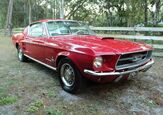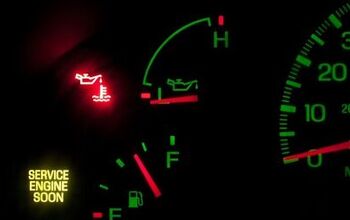1990 Mazda Miata and 1994 Porsche 968 Convertible: Rad-Era Ragtops

Both Mike Schlee and I were in our formative years during the final decade of the last century. Convertibles were darned near everywhere: from Geo Metros and Chevy Cavaliers to every sports car under the sun. Yet here in 2024, droptops under six figures number about… six, not counting SUVs.
To see if we’re missing something, or if there’s a good reason the convertible has fallen out of fashion, we brought together two classic roadsters. The 1990 Mazda Miata famously revived the classic British roadster archetype with a Japanese twist—it would actually start on a regular basis—while the 1994 Porsche 968 Convertible is one of the last examples of the brand’s entry-level model in a pre-Boxster world. Bust out the cassettes, it’s going to get rad.
Interior and Exterior Styling
1990 Mazda Miata: All The Details
Mazda Miata: It’s a Miata, an original first-year in the best color and, at least on the surface, practically showroom-worthy. You know what it looks like. The simple shape is timeless; the happy face of the pop-ups and air intake, infectious. The NA Miata is a reminder that a clean design is forever. That’s not to say it’s without its little details either: the off-center Mazda script up front and the pleasantly tiny door handles. It’s the Miata’s size that shocks. Even something as modern-day compact as a Kona seems more like a Palisade when you’re rolling beside it in the Mazda.
The cabin is another case of bare necessities. There isn’t much of a design to the dashboard: it’s a simple shelf, a classic instrument cluster cowl, and an upright slab of plastic to house the basic manual climate controls and and audio system, complete with a cassette deck. Storage? Cupholders? Pfffft. Wind-up windows are here to confound zennials. The seats are mounted nice and low, with a pleasant knit texture that feels good. The sweet, thin steering wheel and excellent sight lines are a welcome contrast to modern cars, including the current MX-5. On that note, the cabin feels more spacious, particularly in width. That’s probably because the doors are Ritz thin, so try not to think about any side impacts.
Dropping the roof is as simple as ever and can even be accomplished while sitting in the car. If you’re planning on extended periods of al fresca motoring you’ll want to actually get out and unzip the plastic window however, simply to avoid creasing.
1994 Porsche 968 Convertible: All The Details
Porsche 968 Convertible: There is a far better chance that the average passerby won’t even know what the 968 is. Case in point: while stopped at a light on my first drive in the Porsche, a man asked if it was a new car. Sure, from up front it has a vaguely 911 look, until you clock the headlights are also pop-ups—just not as cool as the Mazda’s. And the proportions are all off. The 968 does a commendable job smoothing over the 944’s ‘80s boxiness, yet leaves enough hard creases to make it interesting. I especially like how the mudguard aligns with the rear bumper shutline. The 16-inch alloys are pure ‘90s-era Porsche.
Inside the 968 is so much more luxurious, and not just because it has leather. There’s more space, plus power seats and windows. This tidy example is owned by Porsche Canada, so naturally it features an upgraded head unit with a teeny tiny touchscreen. Pop the glovebox and there’s a USB port to plug in your phone too, so you can access all your media and charge it there. That sound system? Decent. Like the Miata, there’s very little storage room up front, but the 968 does benefit from lockable storage boxes behind the seats (a 2+2 layout was optional). Out back in that capacious trunk, you’ll find a six-disc CD changer.
The roof requires more work than the one on the Mazda. It’s power-operated, so that’s a plus, but it needs to be manually locked and unlocked, using two tools found in the center console. It’s a finicky process but soon becomes second nature. No dropping the top on the move, however: roof operation can only be done while parked, and the car is in accessory mode.
Powertrain and Driving Dynamics
Miata: When Mazda debuted this little lovable lozenge, the NA featured a sweet 1.6-liter twin-cam specifically designed for this application. Quickness wasn’t an option: even new it produced 115 horsepower and 100 pound-feet of torque when paired to the five-speed manual—itself borrowed from the large Mazda 929. There was a four-speed auto too, with peak torque arriving earlier (4,000 instead of 5,500 rpm), but dropping 10 ponies.
This is the OG, the one that set the blueprint Mazda still follows today. There are touchpoints that are familiar: even here Mazda nailed the effortless snick-snick of the shifter, and the parp-parp from that pea-shooter exhaust is warm and friendly and completely non-threatening.
It’s not quick—a dash to 60 mph (96 km/h) was a leisurely high 8s when new, over halfway to the car’s top speed and posing no threat to something as vanilla as a Corolla Cross these days. The sense of speed is unmatched by just about anything with doors, mind you. The Miata sits so low, its extremities so close, and the gear ratios so tight, that it feels like it’s flying even well below posted limits.
It’s so easy to trust, too. The double-wishbone suspension and plump sidewalls imbue the Miata with a soft yet accurate character on the road. It feels both raw and painterly: there’s loads of feel from the thin rim, yet you don’t hustle the Mazda from apex to apex. The best progress is made with long, flowing sweeps, the sort of easy motions that are only possible in something weighing barely a metric ton. The NA is a best buddy, encouraging you on to that next adventure.
968: The 968 arrived on the scene in 1991, with an enlarged version of the 944’s venerable M44 engine. First growing to this 3.0-liter capacity for the 944 S2, in the 968 it benefited from further tweaking including a higher compression ratio (11.0:1) and the addition of Porsche’s then-new VarioCam variable valve timing system—think VTEC, but German. The important figures were 237 hp and 225 lb-ft; basically Toyota GR86 levels, but with a nice chunk of additional torque. A sweet six-speed manual transmission debuted along with an optional four-speed Tiptronic.
With twice the power of the Miata, the Porsche is naturally quicker everywhere. That enormous yet responsive four-pot sounds rough but puts in good work, the thick spread of torque helping it feel modern. It’s the six-speed that truly shines here though: slick and mechanical in action with oh-so-crisp definition, it’s a joy to row. Without much modern electronic gimmickry, the revs fall quickly between each shift, so the 968 gels when you’re quick on the shifts, especially the 2–3. Find the sweet spot and it’s impossible not to smile.
The 968 is also lugging around about 50 percent more weight (around 3,200 pounds), and you notice it through corners as well as on the highway. Remember that this is the final evolution of a platform that first debuted in the ‘70s, and has subsequently accumulated 80,000 miles in the 30 years since it rolled off the production line. There’s a sense of inherent tautness, but the roofectomy has introduced creaks and rattles from the cabin periphery. Well-rounded damping makes it surprisingly comfortable on longer drives, as do those balloon-like tires.
The (hydraulic) power steering is slow but brimming with feel, keeping the driver in a constant two-way conversation with the front axle. These transaxle Porsches were dissed and dismissed by brand snobs when contemporary, but time has proven Porsche knew what it was doing, crafting a classic front-engined experience full of poise and feedback.
Costs and Value
Miata: NA Miata values have been steadily climbing for years, but a tidy one is still a four-figure proposition. Want something a little newer, a little more powerful, and currently less in-demand? An NB Miata should satisfy.
968: A well-kept example of the droptop 968 will cost around $30,000 in America, or $40,000 CAD north of the border. That’s not bad if your perspective involves used 993 and 964 pricing. On the flip side, you could get basically two nice early-year Boxsters for that money. The 968 is undoubtedly rarer, mind you: just 1,519 units (coupes and convertibles) arrived in the US and Canada in 1994.
Final Thoughts: 1990 Mazda Miata and 1994 Porsche 968 Convertible
Are we missing out?
Mike and I are certainly of that mindset, as fans of cars that actually require—and reward—attention. There aren’t a lot of distractions in either of these vehicles, forcing drivers to stay focused. That makes the droptop experience all the more enjoyable. Even running errands or sitting in stop-and-go traffic, both of these cars produced steady smiles, both for us and those around us.
If you feel the same, grab one now before they’re all gone.
Become an AutoGuide insider. Get the latest from the automotive world first by subscribing to our newsletter here.

Kyle began his automotive obsession before he even started school, courtesy of a remote control Porsche and various LEGO sets. He later studied advertising and graphic design at Humber College, which led him to writing about cars (both real and digital). He is now a proud member of the Automobile Journalists Association of Canada (AJAC), where he was the Journalist of the Year runner-up for 2021.
More by Kyle Patrick










































Comments
Join the conversation